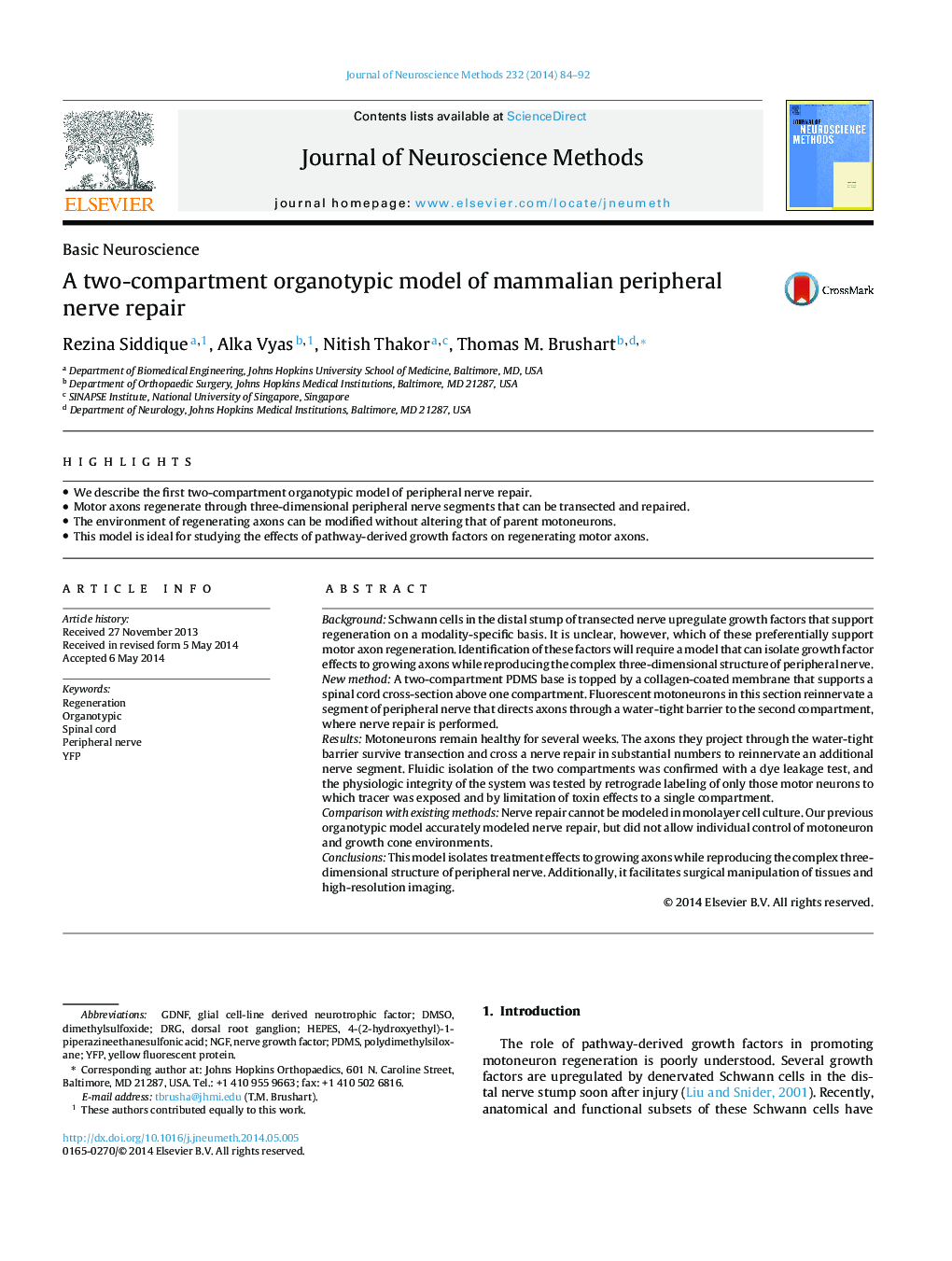| کد مقاله | کد نشریه | سال انتشار | مقاله انگلیسی | نسخه تمام متن |
|---|---|---|---|---|
| 6268676 | 1614637 | 2014 | 9 صفحه PDF | دانلود رایگان |
- We describe the first two-compartment organotypic model of peripheral nerve repair.
- Motor axons regenerate through three-dimensional peripheral nerve segments that can be transected and repaired.
- The environment of regenerating axons can be modified without altering that of parent motoneurons.
- This model is ideal for studying the effects of pathway-derived growth factors on regenerating motor axons.
BackgroundSchwann cells in the distal stump of transected nerve upregulate growth factors that support regeneration on a modality-specific basis. It is unclear, however, which of these preferentially support motor axon regeneration. Identification of these factors will require a model that can isolate growth factor effects to growing axons while reproducing the complex three-dimensional structure of peripheral nerve.New methodA two-compartment PDMS base is topped by a collagen-coated membrane that supports a spinal cord cross-section above one compartment. Fluorescent motoneurons in this section reinnervate a segment of peripheral nerve that directs axons through a water-tight barrier to the second compartment, where nerve repair is performed.ResultsMotoneurons remain healthy for several weeks. The axons they project through the water-tight barrier survive transection and cross a nerve repair in substantial numbers to reinnervate an additional nerve segment. Fluidic isolation of the two compartments was confirmed with a dye leakage test, and the physiologic integrity of the system was tested by retrograde labeling of only those motor neurons to which tracer was exposed and by limitation of toxin effects to a single compartment.Comparison with existing methodsNerve repair cannot be modeled in monolayer cell culture. Our previous organotypic model accurately modeled nerve repair, but did not allow individual control of motoneuron and growth cone environments.ConclusionsThis model isolates treatment effects to growing axons while reproducing the complex three-dimensional structure of peripheral nerve. Additionally, it facilitates surgical manipulation of tissues and high-resolution imaging.
Journal: Journal of Neuroscience Methods - Volume 232, 30 July 2014, Pages 84-92
